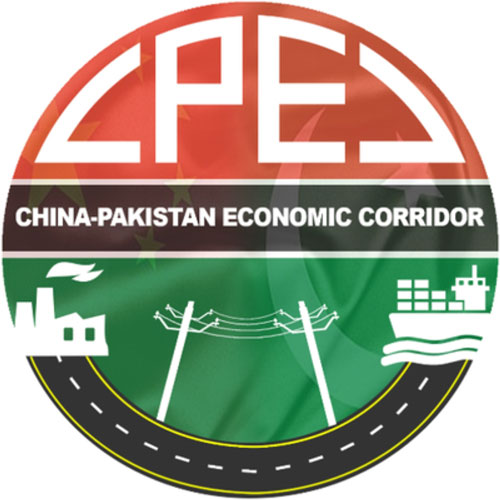S M Hali
JUST when the global pandemic COVID-19 shook the entire world and life appeared to be coming to a standstill, Pakistan’s Prime Minister Imran Khan directed the resumption of all China-Pakistan Economic Corridor (CPEC) related infrastructure and energy projects. Despite the lockdown due to COVID-19, Pakistan’s Gwadar Port, a major project of CPEC under the Belt and Road Initiative (BRI), continues to function despite murmurings by western media that Chinese teams are unable to return to their posts amid the pandemic, stalling many BRI projects. The port of Gwadar employs only a limited number of Chinese staff and relies on local employees. The latest figures indicate that only two Chinese but 140 employees are currently working at Gwadar Port. According to media reports, only last week, a container ship laden with construction material including steel wire and other essentials for the Gwadar international airport project, docked at Gwadar.
Some work on the construction of Free Trade Zone, steel tube factory and business centre had been halted owing to the lockdown but will now resume after the Pakistani Prime Minister’s orders. Chinese Ambassador to Pakistan, Yao Jing informed that the 10th Joint Cooperation Committee (JCC) meeting on CPEC scheduled to be held in April in Islamabad, is going to be held via video conferencing, as the Chinese delegation, which was due to arrive in Islamabad cancelled its visit due to Coronavirus but consultations will go on since CPEC is the major part of Pakistan-China strategic partnership. Yao Jing reiterated that CPEC project is a platform of regional connectivity and prosperity. He informed that the next phase of CPEC is focusing on the social development of Pakistan with key priorities of 17 fast track projects aimed at improving the infrastructure of railways, industrial cooperation, agriculture, health and education as well as some more energy projects. Yao Jing appreciated the Government of Pakistan’s efforts to fast track the China-Pakistan Economic Corridor projects. He expressed his desire to put special focus on Rail Transport, Hydel Power Projects, Social Sector Development Projects and B2B collaboration between the two countries. He further stated that China would also consider investing in the low-cost housing program. The Chinese Ambassador said that the meetings of some of the JWGs would be held through video conferencing to ensure preparation for the upcoming JCC meeting without any delay.
Chinese Consul General at Lahore, Long Dingbin has affirmed that the work on CPEC’s projects remain uninterrupted in the wake of Coronavirus epidemic. The Consulate General maintains close communication with the Corridor projects in the consular area, especially the “Orange Line” project and Matiari to Lahore ±660kV HVDC Transmission Line Project. Pakistan’s Minister for Planning and Development Asad Umar has expressed satisfaction at the overall delivery of CPEC projects and said that the establishment and operationalization of the Special Economic Zones (SEZ) in all of the provinces was a top priority and the progress in that regard was being closely monitored. The SEZs, he said, would act as a catalyst in increasing the growth of local manufacturing. The Minister emphasized the need to increase B2B collaboration in banking, telecom and digital finance, manufacturing and agriculture sectors. The Ambassador assured the Minister that the Chinese side was keen in promoting such relationships between businesses and manufacturing industries.
China’s Global Times in one of news reported that the “2019 novel Coronavirus outbreak has been a huge challenge for China. However, China will never leave the CPEC project unfinished, nor will it let the CPEC collapse despite domestic difficulties. CPEC’s potential impact on Pakistan has been compared to that of the Marshall Plan undertaken by the United States in post-World War-II Europe. Industrial production in Europe increased by a third between 1948 and1952 when the Marshall Plan was operational. China’s Health Silk Road. COVID-19 has expedited China to launch The Health Silk Road, which will run in parallel to the multiple overland Silk Road corridors and the Maritime Silk Road. In a graphic demonstration of soft power, so far China has offered Covid-19-related equipment and medical help to no fewer than 89 nations – and counting. That covers Africa (especially South Africa, Namibia and Kenya, with Alibaba in fact announcing it will send help to all African nations); Latin America (Brazil, Argentina, Venezuela, Peru); the arc from East Asia to Southwest Asia; and Europe.
Key recipients in Europe include Italy, France, Spain, Belgium, the Netherlands, Serbia and Poland. But Italy, most of all, is a very special case. Most are donations. Some are trade – like millions of masks sold to France (and the US). Pakistan is one of the biggest recipients of China’s largesse under the “Health Silk Road”. Scores of flights are continuing to bring in much needed medical supplies from China to Pakistan. The supplies comprise surgical masks, body suits, ventilators, medical teams and even a field hospital. The “Health Silk Road” is not only flights from China to Karachi and Islamabad but giant containers are coming in via the KKH, a part of CPEC from Khunjerab. It may be noted that Khunjerab Pass remains closed from October to April due to snow but it was specially opened to let the medical supplies to Pakistan through. CPEC remains on track and is a hallmark of the special bonds between the people of China and Pakistan. The Prime Minister’s initiative of restarting CPEC construction projects in the wake of COVID-19, has indeed given the mega project a new lease of life.









